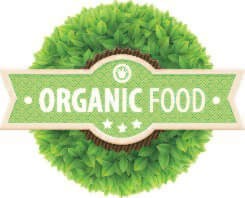
Organic food, once only available in health food stores, is now a mainstay in most grocery chains across the country. What does “organic” really mean? Are organic foods really healthier?
In the United States, organic products must adhere to strict production and labeling requirements set by the U.S. Department of Agriculture (USDA) National Organic Program. The requirements apply to farming, production, and specify how a product’s packaging can be labeled as organic.
According to USDA guidelines, “certified organic” foods:
- Cannot be produced with methods used to genetically modify organisms or influence their growth and development by means that are not possible under natural conditions or processes (such as chemical fertilizers), ionizing radiation or sewage sludge.
- Must adhere to the National List of Allowed and Prohibited Substances specifying what can or cannot be used in organic crop and livestock production.
- Must be overseen by a USDA National Organic Program-authorized certifying agent.
Products can be certified “100% Organic,” defining them as completely organic or made with totally organic ingredients. Products that are 95% or more USDA-certified organic may carry a special USDA seal. Products labeled “Made with Organic Ingredients” means that these contain 70% or more of organic ingredients.
Products containing less than 70% of organic ingredients cannot use the word “organic” on package labeling, but their individual certified organic ingredients can be individually listed as such.
A 2012 Stanford University study published in the Annals of Internal Medicine found it inconclusive as to whether eating organic foods can significantly impact one’s health. Yet there are compelling reasons to choose organic. Requirements for organically grown produce restrict or prohibit the use of food additives and also have a lower risk of pesticide contamination. Therefore, purchasing organic produce and foods can reduce our exposure to these substances. Organic foods are grown using environmentally friendly sustainable farming practices, which can account for why organic foods cost more, as these practices are more expensive.
The USDA Food Safety Inspection Service also verifies other labels, including:
“Grass-fed” animals receive a majority of their nutrients from grass, which can result in an overall lower beef fat content. “Grass-fed” does not limit the use of antibiotics, hormones or pesticides, unless labeled “grass-fed organic.”
“Free-range” indicates poultry was provided shelter with unlimited access to food, fresh water and continuous access to the outdoors. The label is mainly an indication of animal welfare. No definitive research has shown greater health benefits from eating free-range poultry.
Read food labels carefully. Always wash produce to remove pesticide residue, dirt and any germs from handling. Remember… organic labeling is a sensible criteria, but it doesn’t always equate to healthier food—check fat, sodium, sugar and calorie counts.
The post Organic Labeling appeared first on Specialdocs Consultants.
